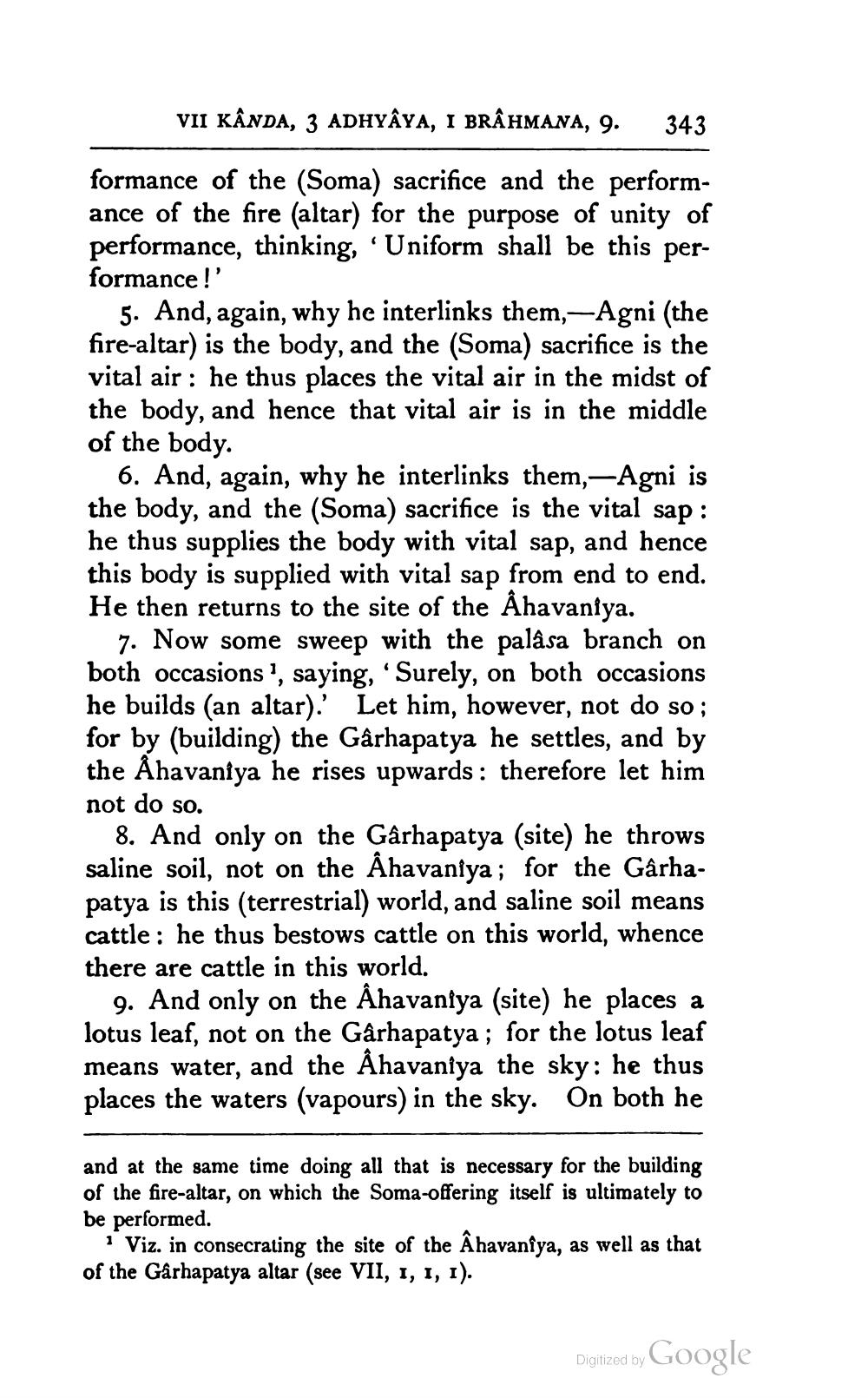________________
VII KÂNDA, 3 ADHYÂYA, I BRÂHMANA, 9.
343
formance of the (Soma) sacrifice and the performance of the fire (altar) for the purpose of unity of performance, thinking, Uniform shall be this performance!'
5. And, again, why he interlinks them,-Agni (the fire-altar) is the body, and the (Soma) sacrifice is the vital air : he thus places the vital air in the midst of the body, and hence that vital air is in the middle of the body.
6. And, again, why he interlinks them,-Agni is the body, and the (Soma) sacrifice is the vital sap : he thus supplies the body with vital sap, and hence this body is supplied with vital sap from end to end. He then returns to the site of the Åhavaniya.
7. Now some sweep with the palâ sa branch on both occasions', saying, 'Surely, on both occasions he builds (an altar). Let him, however, not do so; for by (building) the Gârhapatya he settles, and by the Åhavaniya he rises upwards: therefore let him not do so.
8. And only on the Gârhapatya (site) he throws saline soil, not on the Åhavaniya; for the Gârhapatya is this (terrestrial) world, and saline soil means cattle: he thus bestows cattle on this world, whence there are cattle in this world.
9. And only on the Åhavaniya (site) he places a lotus leaf, not on the Garhapatya ; for the lotus leaf means water, and the Åhavaniya the sky: he thus places the waters (vapours) in the sky. On both he
and at the same time doing all that is necessary for the building of the fire-altar, on which the Soma-offering itself is ultimately to be performed.
1 Viz. in consecrating the site of the Âhavanîya, as well as that of the Gârhapatya altar (see VII, 1, 1, 1).
Digitized by Google




